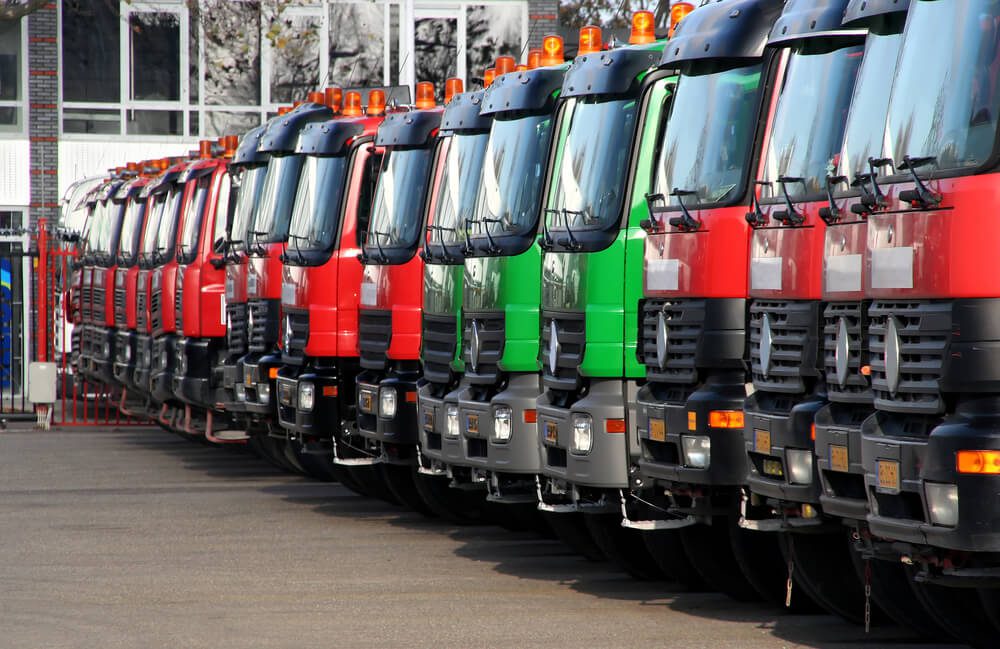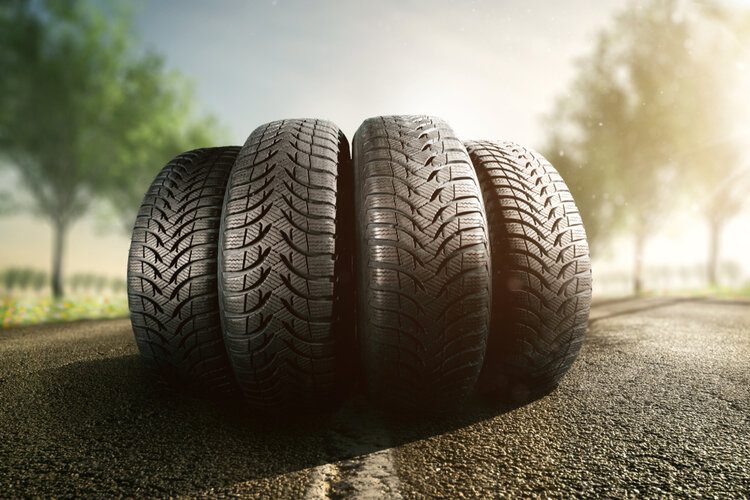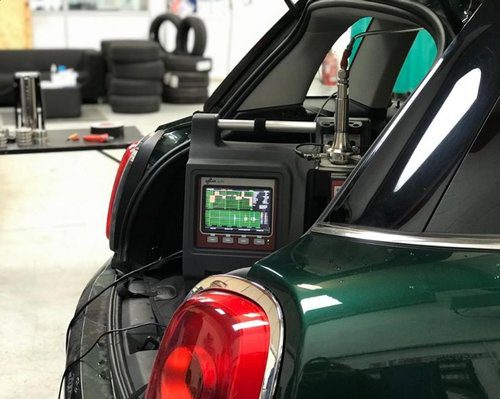Nick has more than fifteen years’ experience in the information sector, specialising in advanced modelling techniques. Through real- world testing Nick is profoundly committed to improving vehicle emissions.
Long-term power shift

As an economics graduate, I tend to view environmental challenges in terms of market failure with pollution as an externality that leads to sub optimal outcomes. I am interested in how we correct that failure. With my economics glasses on I think the market is an incredibly powerful tool to bring about these changes.
In the energy sector we are experiencing a major shift as we move away from reliance on fossil fuel. It’s a once in 100-year disruption and new interested parties see an opportunity to usurp the current energy power players.
200 years ago, the fossil fuel players didn’t hold the power and the key players that emerge in new energy may well hold that influential position for the next 100 years. It is a long-term power shift with vast amounts of money riding on it. With so much at stake it is no surprise that interested parties adopt such polemical positions nor that the facts get trodden on as parties seek to further their own case.
The truth is often inconvenient.
Adding another layer to this, the Chinese have a very smart long- term strategy driven by two key factors – that they never mastered internal combustion engine (ICE) technology, so failed to become a key player in that market, and they don’t have a lot of domestic oil.
What they do have is a lot of the rare earth metals for batteries. It makes absolute sense for them to purge the world of the ICE to lead a shift from something they’re not good at to something that they are good at.
A strange confluence
The combination of global political interests and the economic interests of both China and of the Western non fossil fuel energy and material companies is an extremely powerful mix which is not, in my opinion, leading to the right outcomes. It comes down to two key questions: Firstly, which solutions are genuinely low emission in the real world and, secondly, which of those solutions are scalable?
From the right supply, HVO is a low CO2 emitting real-world solution. However, the problem is the scarcity of HVO with demand running ahead of supply. It is a problem common to other solutions – including vehicle batteries where there are insufficient materials to convert the entire global car fleet and deliver at scale.

So, what is the solution? The only possible trajectory is a mixed-solution strategy – there is absolutely no choice – and that’s actually really good for the market.
Let the market decide
Rather than politicians backing a single horse, perhaps influenced by political, industrial and environmental lobbying, the route to the best solutions is via the marketplace, where different fuels and powertrains compete. But this must go hand-in-hand with an effective system of verification to establish whether or not solutions are genuinely low emission.
We’re currently backing a horse without scrutinising its environmental credentials when it should be the other way around – a free market but with clear disclosure and verification.
Many producers and suppliers of future fuels and future tech already take this seriously and deliver genuinely low CO2 solutions and these should prosper. Those who enter the market fraudulently should get busted. But that’s not currently happening.
At Emissions Analytics we’re interested in what happens in the real world, in actually reducing CO2, not participating in the endless output of words while CO2 increases relentlessly.
A case study in the importance of effective regulation
Emissions Analytics was created in 2011 when we became convinced that vehicle CO2 emissions were much higher in real-world driving than manufacturers’ claims. On the flipside, mpg figures appeared significantly overstated creating a double whammy of worse emissions and higher cost.
How did we go about proving or disproving it? We invested in equipment and technicians; we rented vehicles, and we simply went and tested lots of them – on the road – developing a real-world methodology long before the European Commission did. To date we’ve charted about 2500 different vehicles – the largest programme of real-world testing.
We sought no permission to do this, and the data is ours. We took a disarmingly simple view to approach it as a consumer – rent a vehicle, test it and publish the results.
The equipment we used to measure CO2 also measured nitrogen oxides (NOx) as part of the process. On viewing the first set of data, we saw that the NOx was much higher – often three or four times more – than the regulated level, which led us to question how these vehicles were emitting such high NOx whilst also, seemingly, legally compliant.
We began publishing our data in 2013 – two years before the Volkswagen (VW) emissions scandal – which became known as ‘dieselgate’ – blew up in the States in 2015. Our data also proved our original hypothesis that CO2 emissions were understated. For both CO2 and NOx, it became clear the real-world emissions were substantially higher than the official numbers.
Analysing truth
For everything we analyse we are interested in what’s really happening – whether emissions from diesel generators or from tyre wear – the latest big topic. No official data exists for tyre wear emissions which means that they are effectively ignored from a regulatory point of view, yet our initial tests have already demonstrated that tyre wear emissions are at least 1000 times higher than that from modern exhausts – which are significantly lower than their regulatory limit.
It’s also worth noting that EVs exacerbate the problem, to the tune of about 20%, because they’re heavier.
With tyre wear totally unregulated there is no awareness of this problem. This isn’t because of misleading official information, as it was with manufacturer statements on diesel emissions, but down to the total absence of official information.

These are the topics we relish at Emissions Analytics because it’s where we can have the biggest impact in making improvements.
What’s the funding model?
When we started our analysis, we believed there would be commercial value in the data. We test hundreds of vehicles independently on the same cycle to produce directly comparable data held in a database that anyone can subscribe to. They can view it, but they have no influence on what we test or when or how.
Some manufacturers and authorities subscribe to our data but, importantly, they have no influence in its compilation. We remain independent. We don’t get big grants from environmental or industrial lobby groups. We are simply a small group of private individuals who put up the initial money to fund the testing work and the data generated has commercial value that funds our ongoing research. A simple, limited company – no mystique and no secret powers behind the throne.
It is the same with tyres. We are currently testing hundreds of different ones, choosing what we test and where. Our gamble is the belief that it is a sufficiently important topic that people will want our data.
Why do people access the data? Competition or desire to improve?
It’s a good question. And I think it’s a whole bundle of different emotions from, at the most defensive, “what have these guys got on us?” to, on the other hand, a genuine “we really want to make our products as good as possible. Let’s find out who’s best in class, let’s find out what the composition of their tyres is and let’s improve what we do.” And it’s probably everything in between.
From our point of view, the motivation doesn’t really matter. if it spurs the market, if it throws the disinfectant of sunlight onto the situation and leads people to improve what they do or leads to the worst products being regulated out of the market then that’s all to the good.
So, your motivation was sensing something was misrepresented that you could throw some light on and make a difference?
Absolutely, exactly that. I’m not an environmental campaigner in that I don’t glue myself to anything and I don’t think that’s an effective long- term approach. What I do believe in is the power of information.
It does get spiced up somewhat by what became clear about dieselgate – that there was a problem with NOx emissions, but governments were in no hurry to do anything about it.
The European authorities knew that NOx emissions were much higher than official stated levels long before Dieselgate, at least as far back as 2010, and are on the record admitting this. But nothing was done with any urgency.
Solutions were available, but implementing them would reduce manufacturer profits. It was in their interest not to upset the apple cart – but it was creating damage to the environment and people’s health. Whether these exceedances will prove to have been against the law will, ultimately, be determined in court.
For us, if there is an environmental impact that we can identify and quantify we will publish the information to hopefully bring about a beneficial solution.
VW was the touch paper
Interestingly it was a study that, effectively, triggered dieselgate.
A small project funded by ICT, the International Council on Clean Transportation, was looking to demonstrate to Europeans how clean diesel technology was in the US. Some tests conformed to expectations, but two VWs were found to be massively over emitting. So, a very small project with a different objective, stumbled across an illegal defeat device.
VW confessed to mis-stating emissions for half a million cars – a drop in the ocean in numbers but triggered the question: If VW is cheating in America, who else is cheating and where? This is where we got involved.
VW was the touch paper, which led to a realisation that Europe had a much bigger problem. Our data showed that every major manufacturer in Europe was emitting NOx emissions well over the regulatory limit.
When we began, most diesel vehicles, including vans and to some extent heavy duty vehicles as well, had NOx emissions above the regulated limit. Now they are significantly below.
The current limit for a diesel car is 80mg/km and latest models average about 20mg/km in real-world conditions. This creates a bizarre situation. Before dieselgate we were encouraged into diesel, but NOx emissions were very high. Now diesels have NOx emissions well below the limit and produce 15% less CO2 than petrol, but are being banned.
At a time when we need every single route to decarbonisation at our disposal, especially for transport, there’s a perversity in that. We need hybridisation, renewable fuels, synthetic fuels and so on, but we need diesels too.
What made current vehicles NOx cleaner?
Simply, the deployment of the right exhaust aftertreatment technology. Even before dieselgate, a few European manufacturers were reducing NOx emissions and, paradoxically, VW was one of the best in Europe.
In America where dieselgate began, it was VW that was the exception. The other manufacturers, by and large, were clean. But, because of the lax nature of European regulations, manufacturers were, arguably, not required, in practice, to be clean and only implemented available technologies as a panic response to the scandal.

Average NOx emissions just before dieselgate were about 400 mg/ km across all manufacturers in Europe. Within the blink of an eye, they were down to about 40. And today around 20 – a 90% reduction in NOx in next to no time. It is not talked about enough how miraculously quickly they were able to clean up – because the technology already existed.
The regulations were not forcing the deployment. They are commercial companies, answerable to their shareholders, so if there is a way to be compliant and achieve more profit, it’s not just that you would be tempted, you could argue that you’re obliged, by fiduciary duty to shareholders, to do it.
Was this a legitimate reason to avoid deploying the technology or were they misreading the regulations? It is currently playing out in court and highlights how regulations can create a false sense of security when what matters is what is really happening.
Get the regulations right
The energy sector is pushing hard for clear legislation and regulation so that investment will follow to accelerate delivery of solutions, but the regulations have to be right. They have to be clear, specific and based on the right information, and backed up by surveillance and enforcement.
The most egregiously bad one currently, setting aside the absence of a tyre wear regulation, is the European fleet average CO2 regulation for light duty vehicles. You can produce a massive 3 tonne, pure battery, electric vehicle and, in the eyes of the European Commission, that is a zero emissions vehicle. But it’s no secret that the CO2 emissions in producing that vehicle, particularly the battery, are significant.
Many will argue over how many tonnes of CO2 are generated in producing it, but it doesn’t really matter – it’s a large number. For regulations to deem that vehicle to be zero CO2 creates an enormous distortion. It brings down reported fleet CO2 emissions, but does it reduce global CO2 emissions? The answer is an unequivocal ‘no’.
It is still likely that battery electric vehicles will reduce CO2 over the lifetime of the vehicle by 1/2. In the short term they make it worse because most of the CO2 is incurred up front whereas, with an ICE, most is incurred at the back end as you burn fuel.
What can be said with 100% certainty is that these vehicles are nowhere near zero emission yet, as deemed by the regulations.
It means that those who buy a Tesla, for example, think they’re saving the planet when they’re not. They may be helping, but it’s certainly not zero emission and, for me, that is the most egregious, misleading, disingenuous, economically and socially damaging position that exists in current environmental regulation and certainly not leading to an optimal outcome.
Regulations will always take a simplified view of the world. But Europe is wilfully closing its eyes to emissions created largely in China where the materials are mined and refined and the cars manufactured, often using coal-fired power. The car arrives on the boat and when drive in Europe, the resultant CO2 is very low and, in regulatory terms, that’s all that matters at the moment.
It is killing the European automotive industry because it can’t compete – it can’t mine and refine those materials in Europe and, if it did, the CO2 emissions would be counted. Move the production to China and it’s out of sight, out of mind.
Beware simple solutions
But CO2 doesn’t care where it’s produced – it still ends up in the atmosphere. Whether it’s building vehicles, refining fuel or creating hydrogen or synthetic liquid fuels, parking the problem offshore doesn’t mean it’s good for the planet.
Solving climate change is a hard problem. If anyone comes bearing simple solutions, be aware, do your own research, make sure it’s real.
Because sometimes it is, but often it isn’t.

